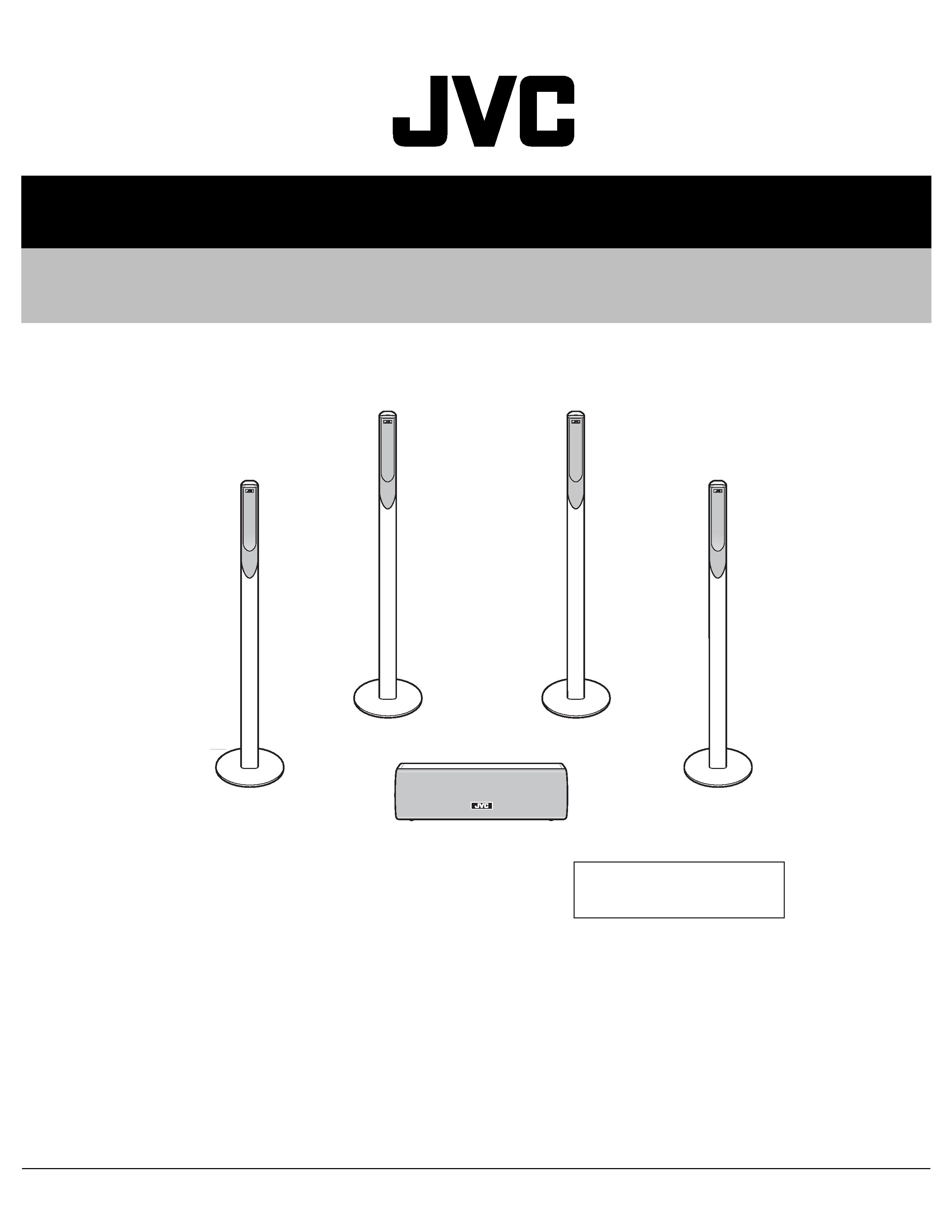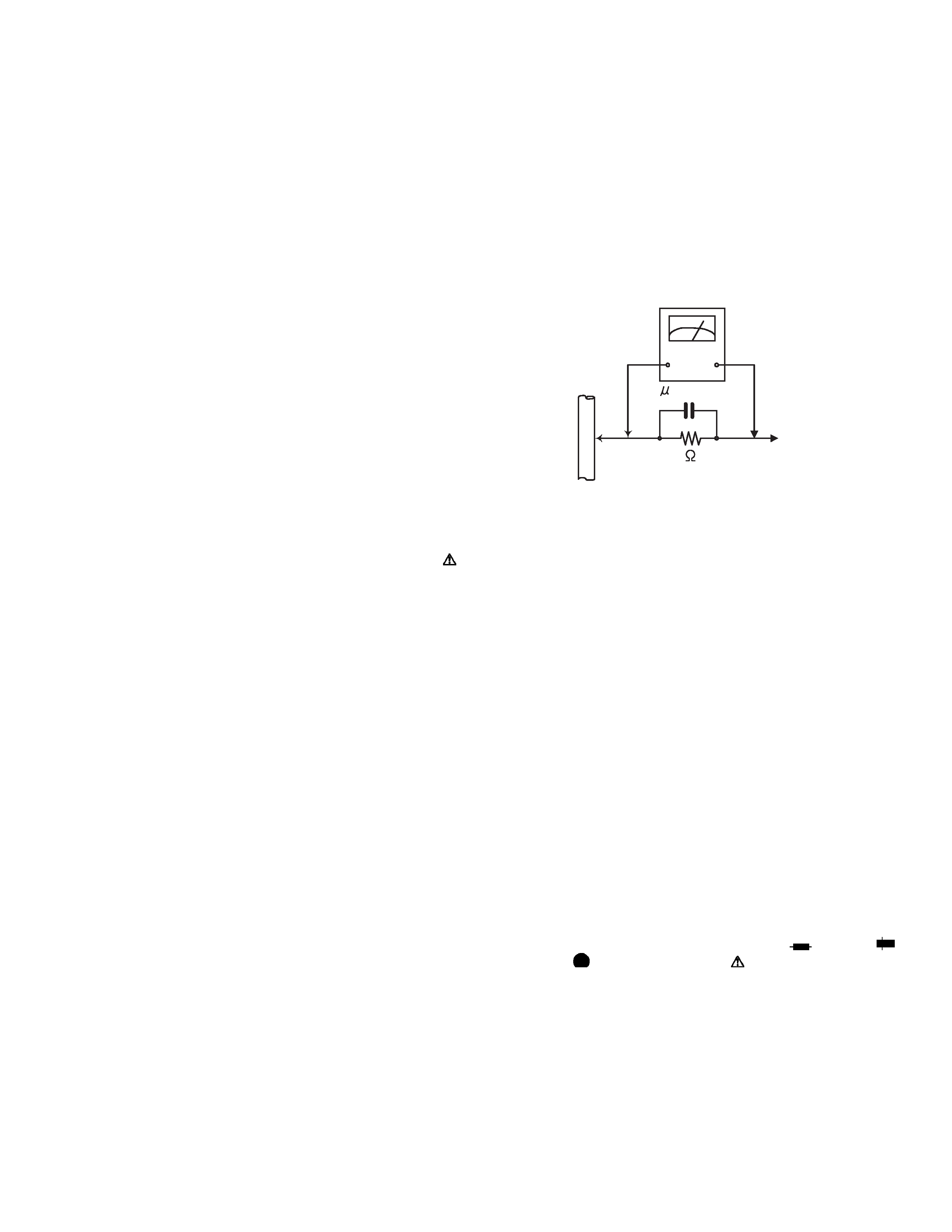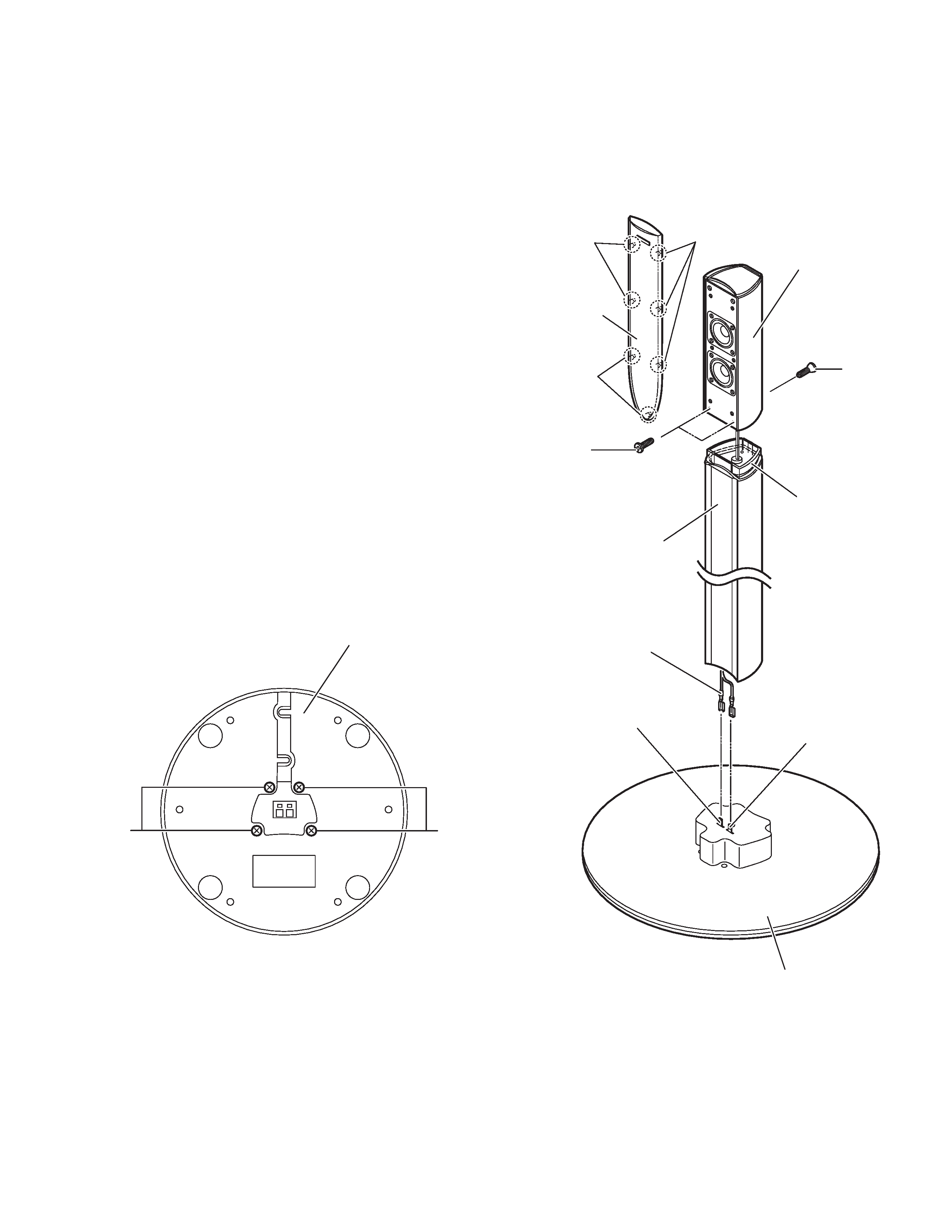
SERVICE MANUAL
COPYRIGHT © 2003 VICTOR COMPANY OF JAPAN, LIMITED
No.22068
2003/7
SATELLITE SPEAKER SYSTEM
22068
2003
7
SP-F303
TABLE OF CONTENTS
1
PRECAUTIONS . . . . . . . . . . . . . . . . . . . . . . . . . . . . . . . . . . . . . . . . . . . . . . . . . . . . . . . . . . . . . . . . . . . . . . . 1-3
2
SPECIFIC SERVICE INSTRUCTIONS . . . . . . . . . . . . . . . . . . . . . . . . . . . . . . . . . . . . . . . . . . . . . . . . . . . . . . 1-4
3
DISASSEMBLY . . . . . . . . . . . . . . . . . . . . . . . . . . . . . . . . . . . . . . . . . . . . . . . . . . . . . . . . . . . . . . . . . . . . . . . 1-5
4
ADJUSTMENT . . . . . . . . . . . . . . . . . . . . . . . . . . . . . . . . . . . . . . . . . . . . . . . . . . . . . . . . . . . . . . . . . . . . . . . . 1-7
5
TROUBLE SHOOTING . . . . . . . . . . . . . . . . . . . . . . . . . . . . . . . . . . . . . . . . . . . . . . . . . . . . . . . . . . . . . . . . . . 1-8
SP-F303F
SP-F303F
SP-F303F
SP-F303F
SP-F303C
E --------- Continental Europe
Area Suffix

1-2 (No.22068)
SPECIFICATION
Type
1-way 2-speaker Bass reflex type (magnetically shielded type)
Speaker unit
5.5 cm cone
× 2
Frequency range
80 Hz to 20 000 Hz
Input impedance
8
Power handling capacity
100 W
Sound pressure level
80 dB/W
·m
Dimensions
250 mm (width)
× 1103 mm (height) × 250 mm (depth)
Mass
3.77 kg each

(No.22068)1-3
SECTION 1
PRECAUTIONS
1.1
Safety Precautions
(1) This design of this product contains special hardware and
many circuits and components specially for safety purpos-
es. For continued protection, no changes should be made
to the original design unless authorized in writing by the
manufacturer. Replacement parts must be identical to
those used in the original circuits. Services should be per-
formed by qualified personnel only.
(2) Alterations of the design or circuitry of the product should
not be made. Any design alterations of the product should
not be made. Any design alterations or additions will void
the manufacturers warranty and will further relieve the
manufacture of responsibility for personal injury or property
damage resulting therefrom.
(3) Many electrical and mechanical parts in the products have
special safety-related characteristics. These characteris-
tics are often not evident from visual inspection nor can the
protection afforded by them necessarily be obtained by us-
ing replacement components rated for higher voltage, watt-
age, etc. Replacement parts which
have these special
safety characteristics are identified in the Parts List of Ser-
vice Manual. Electrical components having such features
are identified by shading on the schematics and by (
) on
the Parts List in the Service Manual. The use of a substitute
replacement which does not have the same safety charac-
teristics as the recommended replacement parts shown in
the Parts List of Service Manual may create shock, fire, or
other hazards.
(4) The leads in the products are routed and dressed with ties,
clamps, tubings, barriers and the like to be separated from
live parts, high temperature parts, moving parts and/or
sharp edges for the prevention of electric shock and fire
hazard. When service is required, the original lead routing
and dress should be observed, and it should be confirmed
that they have been returned to normal, after reassem-
bling.
(5) Leakage shock hazard testing
After reassembling the product, always perform an isola-
tion check on the exposed metal parts of the product (an-
tenna terminals, knobs, metal cabinet, screw heads,
headphone jack, control shafts, etc.) to be sure the product
is safe to operate without danger of electrical shock.Do not
use a line isolation transformer during this check.
· Plug the AC line cord directly into the AC outlet. Using a
"Leakage Current Tester", measure the leakage current
from each exposed metal parts of the cabinet, particular-
ly any exposed metal part having a return path to the
chassis, to a known good earth ground. Any leakage cur-
rent must not exceed 0.5mA AC (r.m.s.).
· Alternate check method
Plug the AC line cord directly into the AC outlet. Use an
AC voltmeter having, 1,000
per volt or more sensitivity
in the following manner. Connect a 1,500
10W resistor
paralleled by a 0.15
µF AC-type capacitor between an ex-
posed metal part and a known good earth ground.
Measure the AC voltage across the resistor with the AC
voltmeter.
Move the resistor connection to each exposed metal
part, particularly any exposed metal part having a return
path to the chassis, and measure the AC voltage across
the resistor. Now, reverse the plug in the AC outlet and
repeat each measurement. Voltage measured any must
not exceed 0.75 V AC (r.m.s.). This corresponds to 0.5
µ
mA AC (r.m.s.).
1.2
Warning
(1) This equipment has been designed and manufactured to
meet international safety standards.
(2) It is the legal responsibility of the repairer to ensure that
these safety standards are maintained.
(3) Repairs must be made in accordance with the relevant
safety standards.
(4) It is essential that safety critical components are replaced
by approved parts.
(5) If mains voltage selector is provided, check setting for local
voltage.
1.3
Caution
Burrs formed during molding may be left over on some parts
of the chassis.
Therefore, pay attention to such burrs in the case of pre-
forming repair of this system.
1.4
Critical parts for safety
In regard with component parts appearing on the silk-screen
printed side (parts side) of the PWB diagrams, the parts that are
printed over with black such as the resistor (
), diode (
)
and ICP (
) or identified by the "
" mark nearby are critical
for safety. When replacing them, be sure to use the parts of the
same type and rating as specified by the manufacturer.
(This regulation dose not Except the J and C version)
Good earth ground
Place this
probe on
each exposed
metal part.
AC VOLTMETER
(Having 1000
ohms/volts,
or more sensitivity)
1500
10W
0.15 F AC TYPE

1-4 (No.22068)
SECTION 2
SPECIFIC SERVICE INSTRUCTIONS
This service manual does not describe SPECIFIC SERVICE INSTRUCTIONS.

(No.22068)1-5
SECTION 3
DISASSEMBLY
· Before disassembling the main body, lay down it first.
3.1
Removing the cabinet assembly
(See Figs.1 and 2)
(1) From the bottom side of the main body, remove the four
screws A attaching the stand assembly. (See Fig.1.)
(CAUTION)
· The speaker wire assembly is connected with the
speaker terminals at this time. Be careful not to dam-
age the speaker terminal and the speaker wire.
(2) From the top side of the stand assembly, disconnect the
speaker wire assembly on the speaker terminals. (See
Fig.2.)
(3) Remove the seven hooks a attaching the net assembly to
the cabinet assembly. (See Fig.2.)
(CAUTION)
When removing the net assembly, be careful not to dam-
age the speakers and the cabinet assembly.
(Reference)
· As the net assembly is fixed with the adhesive and the
two-sided tape, remove the net assembly by using a
minus driver or similar tool.
· Attach the net assembly after applying the adhesive to
the hooks a.
(4) Remove the two screws B and screw C. (See Fig.2.)
(5) Pull out the stand from the cabinet assembly while peeling
off the adhesive section b. (See Fig.2.)
Fig.1
Fig.2
Stand assembly
A
A
B
C
Adhesive
section b
Stand
Cabinet assembly
Net assembly
Speaker wire assembly
Stand assembly
Speaker terminal
Speaker terminal
Hooks a
Hooks a
Hooks a
